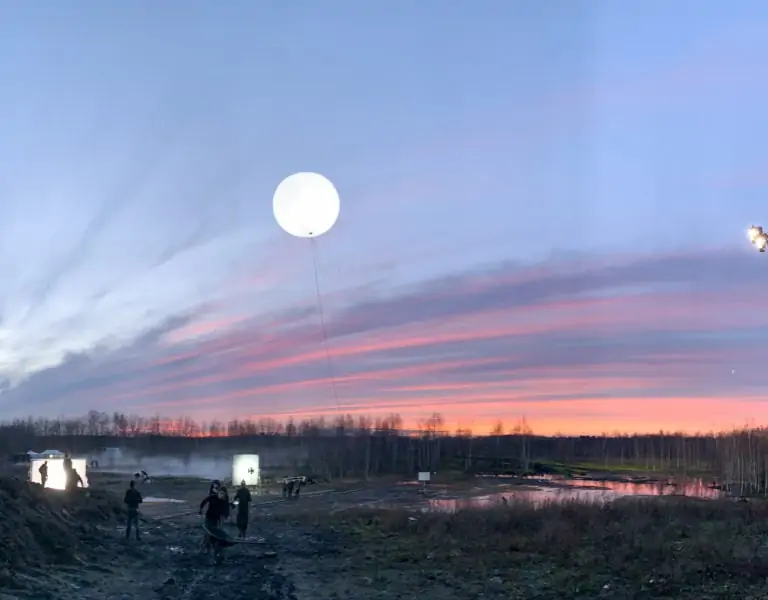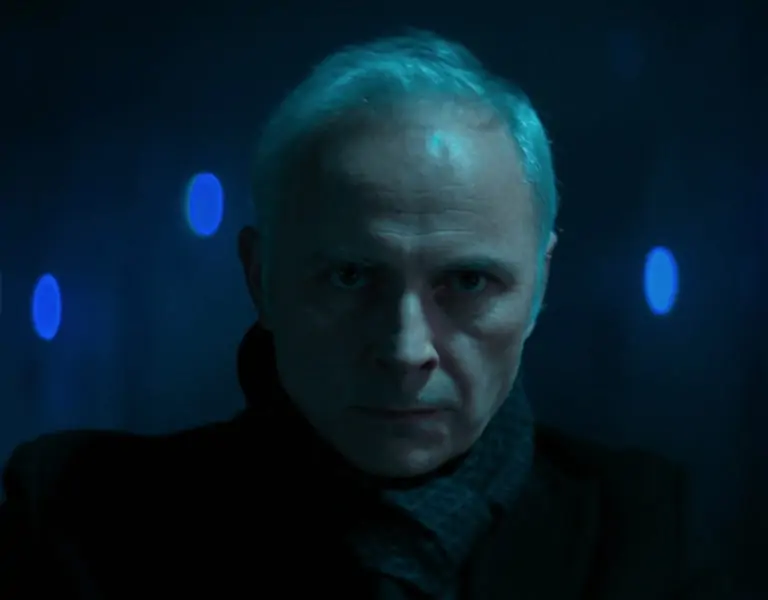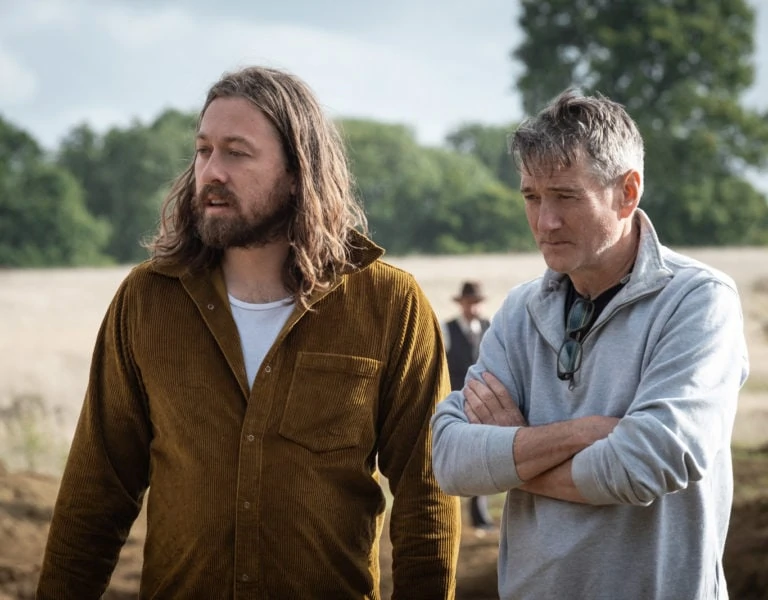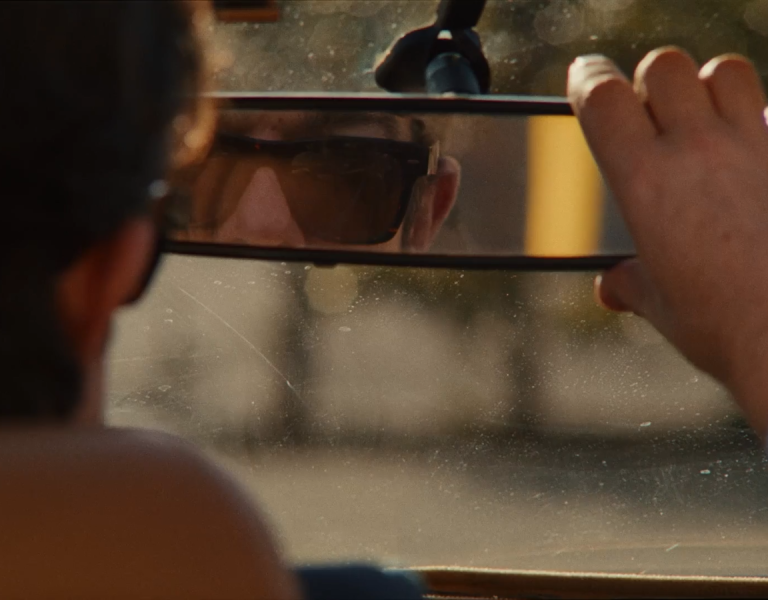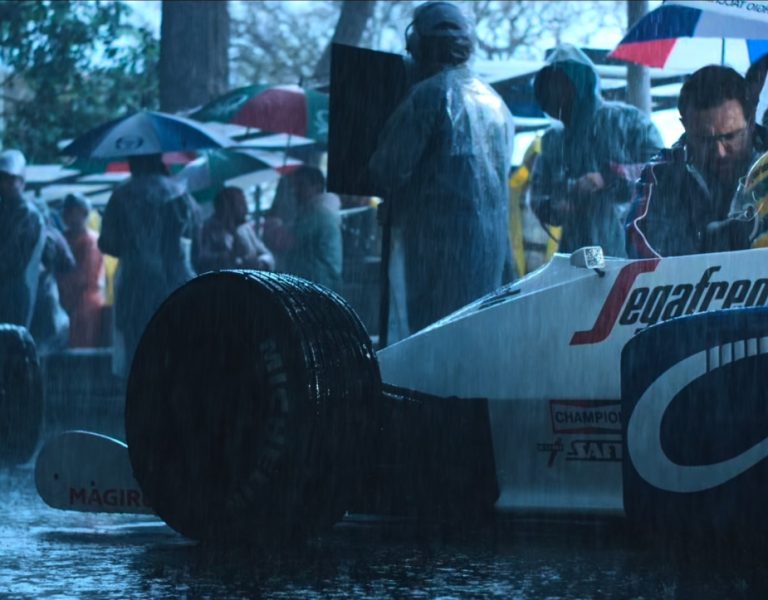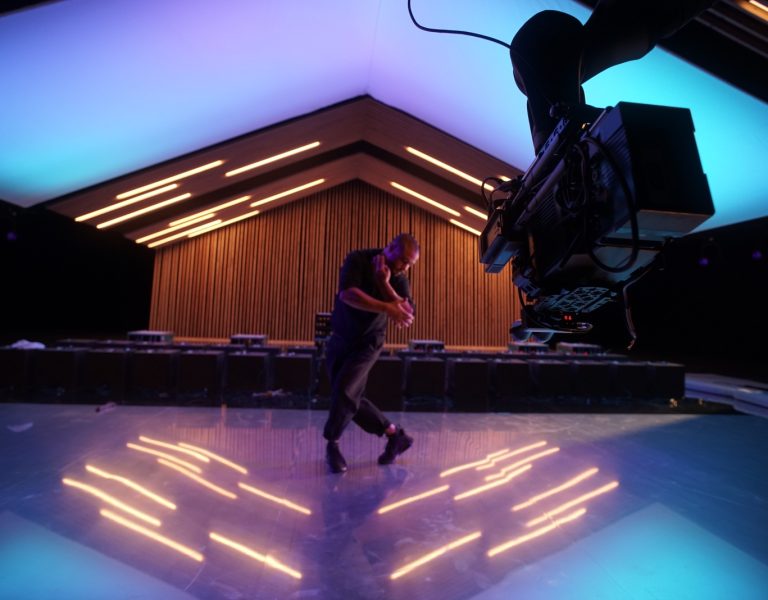LIGHT IN THE DARK
Cinematographer Drew Daniels reveals the challenges of filming Anora, navigating light and composition in a gripping, real-time fight scene.
For cinematographer Drew Daniels, his journey with the Cannes-winning Anora began with a dinner in Los Angeles alongside writer-director Sean Baker. The pair had collaborated on the 2021 comedy-drama Red Rocket, which Baker was still editing at the time of their meeting. As they sat and ate, Baker outlined an early version of Anora, the wild story of a Brooklyn lap dancer who impulsively marries a wealthy client. Daniels was ecstatic: “[I just thought], ‘Oh, great. That means he wants to work with me again!’”
Baker was eager to secure Daniels’ services from the outset, partly because he enjoys working closely with his director of photography right from the beginning of a project. “He brought me in early. We did early scouts. We met up in New York, [he] flew me out. We just got in the van together, drove around… I can’t even remember if there was a script at that point. I think there was an early version of a script. But that’s how we work. We really do most of our work scouting.”
While the “first seed” of Anora was a Russian mafia tale involving a kidnapping, Anora evolved over time. The final film, which delighted jury members at this year’s Cannes Film Festival, who awarded it the coveted Palme d’Or, sees lap dancer Anora (Mikey Madison) thrust into the orbit of Ivan (Mark Eidelstein), the spoiled son of a Russian oligarch. When his parents discover that he’s married Anora after just a few days together, they send in heavies to annul the union, leading Anora to fight for her rights.

New York state of mind
Refreshingly showcasing Brooklyn and the nearby Coney Island—locations used in countless films from The Warriors to Wonder Wheel—Daniels explains that he and Baker’s respective styles brought a welcome visual tension to the film. “I think he’s very much into objectivity and letting things be in a wide and very simple and very compositional. If he could shoot a film in just wide, static frames, I feel like that would be his dream. For me, it was a film called Anora, and it’s from her perspective… at least, that’s how I saw it. So, it ends up being this balance between objectivity and then the subjectivity of making it her film.”
While Baker won widespread acclaim for his 2015 film Tangerine, which he filmed entirely on three iPhone 5S smartphones, he has long championed shooting on celluloid. “I think since [2017’s] The Florida Project, he shot everything on film,” says Daniels, noting that Anora was captured on 35mm stock. “Now he can, now he has the budget to do it. And if he can afford it, I think we’re going to do it, pretty much every time. Unless there’s a unique reason for something else.”
While it might surprise some, given Baker focuses on very contemporary stories about those on the margins of society, Daniels adds that the director is “very classic in a lot of ways.” Similarly, Daniels is a strong advocate for shooting on film. “The process is just much more enjoyable,” he says. “It’s not for every project, but for the stories I like to tell, the films I like to work on, it does have an extra layer, and it does work better. It’s preferable for me.”

Vintage vibes
Filming the entire movie on just one camera, the Arricam LT, Daniels and Baker utilised vintage Lomo anamorphic lenses, “which are old Russian lenses,” an apt choice given the nationalities of some of the characters. “We mostly shot with two lenses, the 35 and 75, and it just has a really specific look because of that,” he says. “It’s very soft, it’s very milky, it’s very grey in a lot of ways.” The 35mm lens gives the frame a “lot of distortion on the edges,” he adds. “It just gave it this really interesting look.”
Part of Daniels’ approach “was to use the tools that they had in the ’70s or the ’60s.” Most of the film was shot with the camera mounted on sticks or dollies. “Working with Sean… a lot of people assume it’s just total chaos the whole time and you’re shooting handheld and you’re just improvising everything. But it’s not like that. I’d say he’s very meticulous. He’s very concerned with composition and mise-en-scène and very specific about camera work. If we can do it as simply as possible, that’s usually what we do. Ninety-nine percent of the time we aim for simplicity.”

In keeping with this idea, Daniels set out to use natural light where possible, although inevitably he turned to artificial sources for certain scenes. “I ended up using a lot of Creamsource Vortex lights. And I use a lot of Fiilex Q8s and Q10s. And then we had this light; our gaffer called it ‘the dragon of chaos’, which is just this giant flat LED light. It’s like a 4×4 soft light. And he had this fuzzy material to make it even softer. And I think it was a Kino Flo – a big 4×3 Kino Celeb. We used that quite a bit, just to wrap the light or to light a close-up.”
One of the trickiest areas to illuminate was the lap dancing club where Anora works. “The lights in the club were so bad. The quality was so poor, and they were so dim. I remember walking in on the scout and just being like, ‘Okay, this place is great, but we’re not going to see anything… I’m going to have to boost everything in this club to get any kind of exposure.’ So that’s what I had to do. I had to re-bulb all the practicals. I had to add our own moving lights and just hide lights as much as I could, [in] little nooks and crannies. I didn’t want to give it too much of a slick look or have all the colours be super uniform and themed. I wanted to be a little messy, kind of how it was in real life.”

Lighting fighting
By far the most testing sequence to shoot, however, was the film’s key scene—a 28-minute real-time fight between Anora and two goons, Igor (Yura Borisov) and Garnick (Vache Tovmasyan), who are sent in to subdue her. “In every way that part of the film was just very, very challenging,” says Daniels. Shot in chronological order, in a glass-walled house that belongs to Ivan’s parents, the scene was precisely choreographed. But as living room furniture is smashed to smithereens, the complexity of the scene was less to do with the destruction that ensues.
“The hard part was maintaining continuity of light in a room where you’re seeing windows in every direction,” explains Daniels. “We got every single weather imaginable and, we shot in the wintertime. I couldn’t really get an exposure until maybe eight in the morning. So even if the sun was rising much earlier than that, there was an hour or so where we just had to wait for the light to get bright enough, because I was relying a lot on natural light in that big space. So I had to be the one to look at the meter, and be like, ‘Okay, we’re good. We can start shooting now.’ And then from that point on, it was just like, ‘Go, go, go, go, go!’”

As Daniels notes, he was often seen as the villain of the piece, telling the others that they had to stop shooting due to the quality of the light. “I had to choose an exposure for the whole scene so that it looked continuous. And I couldn’t really boost it, because you’re seeing everything. So, if you boost someone’s face, then the background is now too dark. So, I was being very cranky, just about lighting, about when we could shoot, when we had to stop shooting.” At points, he was forced to shoot day for night. “I had one big light and then a host of smaller HMI lights. You watch the movie, and you would never, ever know it. But some of the shots are just shot at night.”
In particular, the central fight scene proved a real headache to grade. Daniels worked with Alistair Arnold at FotoKem, a long-time collaborator, but it wasn’t an easy process. “You’re trying to make the scene look continuous under various lighting scenarios where sometimes it’s sunny outside and everything in the house is warmer, and then the next day it’s raining or it’s snowing, or it’s in and out of clouds. So, you’re just constantly balancing everything and windowing parts of the frame, just to get it to look normal and continuous.” Nevertheless, due to their hard work, Daniels was very happy with the result for a film that takes audiences on a wild and visually stimulating journey. “We definitely went far in the look of the film.”

